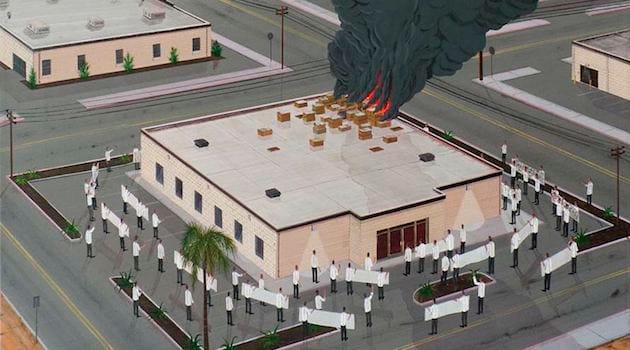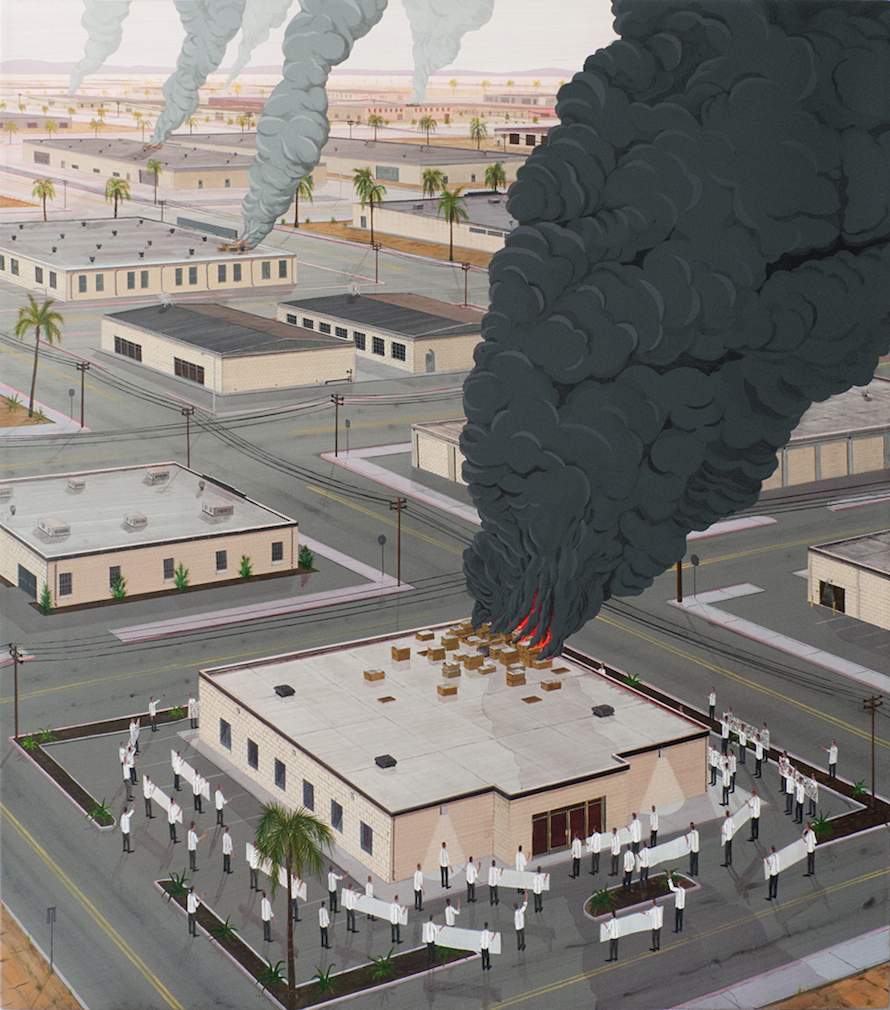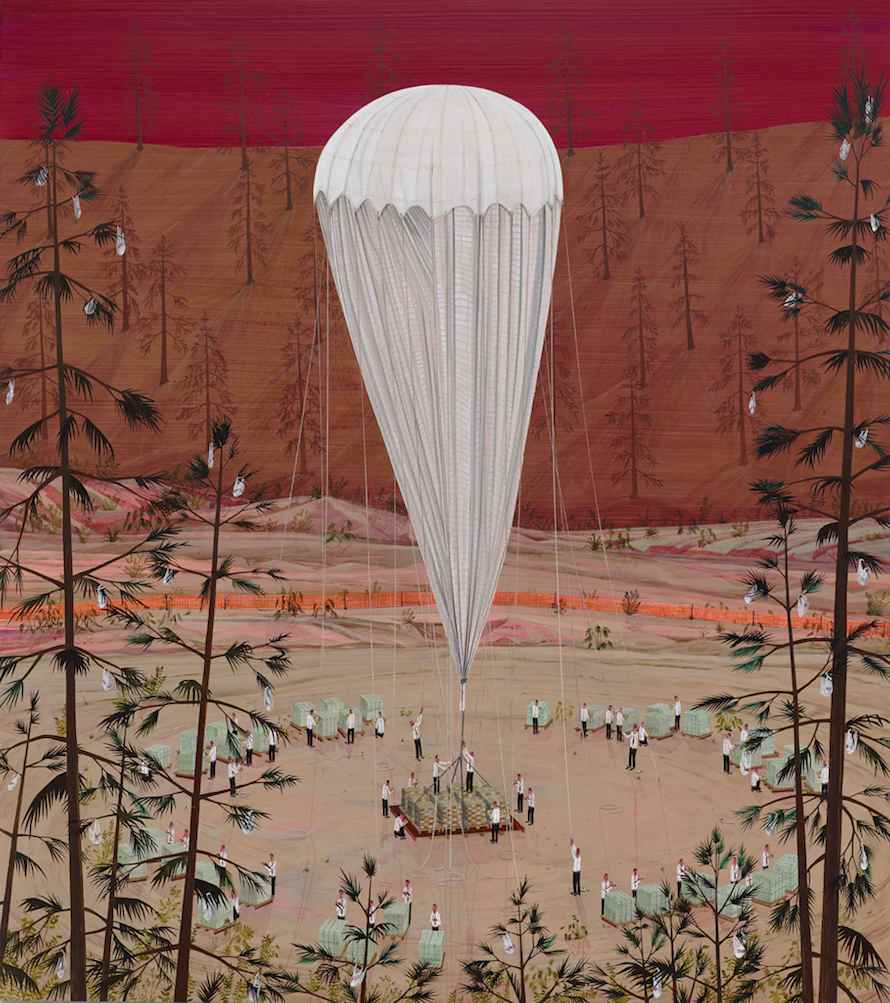The Power of Ritual
An artist’s personal issues become manifest through dozens of identically dressed little men.

Interview by Rosecrans Baldwin
The Morning News: You’ve been doing this series with the little men for a while. Where did it begin?
Ian Davis: I don’t really work in terms of series. One painting leads to the next and each builds on the worldview I’m depicting in the whole body of work. I started making these kinds of paintings about 10 years ago. I suppose they began in my mind, in that despite what source materials I use or where the imagery comes from, they ultimately begin in my mind. With a little help from serendipity. I stumble upon images that appeal to me, or situations that seem worthy of describing. Continue reading ↓
“Rituals” is on view at Leslie Tonkonow Artworks + Projects, New York, NY, through Oct. 25, 2014. All images used with permission, copyright © the artist, all rights reserved.








Interview continued
TMN: How much do you identify with these men in the paintings?
ID: One-hundred percent. I’m implicating us all in this. If anything, right now my job seems to be figuring out how to reflect something without making it into any sort of “implication” in the first place. I’d like to soften the finger-pointing if possible.
TMN: So what would be the ideal response from a viewer?
ID: Ideally, I’d like the viewer to spend enough time in front of the painting for it to unfold for them. Hopefully there is a graphic or compositional quality that lures them in, so to speak. Once they’re in front of the painting and it has their full attention, all the little details become visible. If they are open to it, then they can pay attention to the painting part or the image part. Hopefully both. The idea is to describe something very clearly, yet there’s still an element of “what’s going on here?”
TMN: You have an interest in the massive, the repetitious.
ID: Yeah, I think it’s sort of odd that I avoid repetition in all areas of my life except when it comes to working. It feels very machine-like.
TMN: Are Cezanne’s pears overrated?
ID: I don’t know. I think they’re good.
TMN: Who inspires you? Whose career would you like to emulate?
ID: For inspiration, Magritte, De Chirico, Roger Brown, David Hockney, Joanne Greenbaum, Lee Krasner, Orson Welles, Arthur Lee, Ram Dass, Brian Eno.
I’m not sure whose career I’d like to emulate because sustaining a healthy relationship to making stuff seems like such a challenge. Whoever made good work for a long time and stayed reasonably stable emotionally.
TMN: Can you work without telling a story?
ID: I’m not really telling a story. I’m describing the objects and the setting for something to happen. It’s all the ingredients of narrative but no story really. It’s not meant to be clear what’s happening. Often it’s an elaborate smokescreen for me to talk about something personal. Despite spending months on them, I try to resist probing into the meaning of them. Why I’m making them is something that usually reveals itself late in the game, without any effort on my part. It just sort of clicks into place. But in terms of what they are telling other people, I’m not really telling them anything too specific.
TMN: What was the first piece of art you sold?
ID: The first piece of art I sold was at a gallery in Scottsdale, Ariz. It was unbelievable because it was the first time that I got any positive reinforcement for trying to make art. I did pretty well before I was trying to make art, in terms of the world kind of giving me a green light. But when I went to college it became pretty clear that what I’d been doing wasn’t making art. At least that’s what I was told. When I tried to make art, suddenly this thing I had absolute confidence about became complicated and I got self-conscious. Selling paintings was such a shock because my teachers had no interest in what I was doing.
TMN: How often are you afraid?
ID: That’s a trick question. I have a pretty constant low level of fear going on, punctuated by alternating spikes of amusement and terror. I wish that weren’t true.
